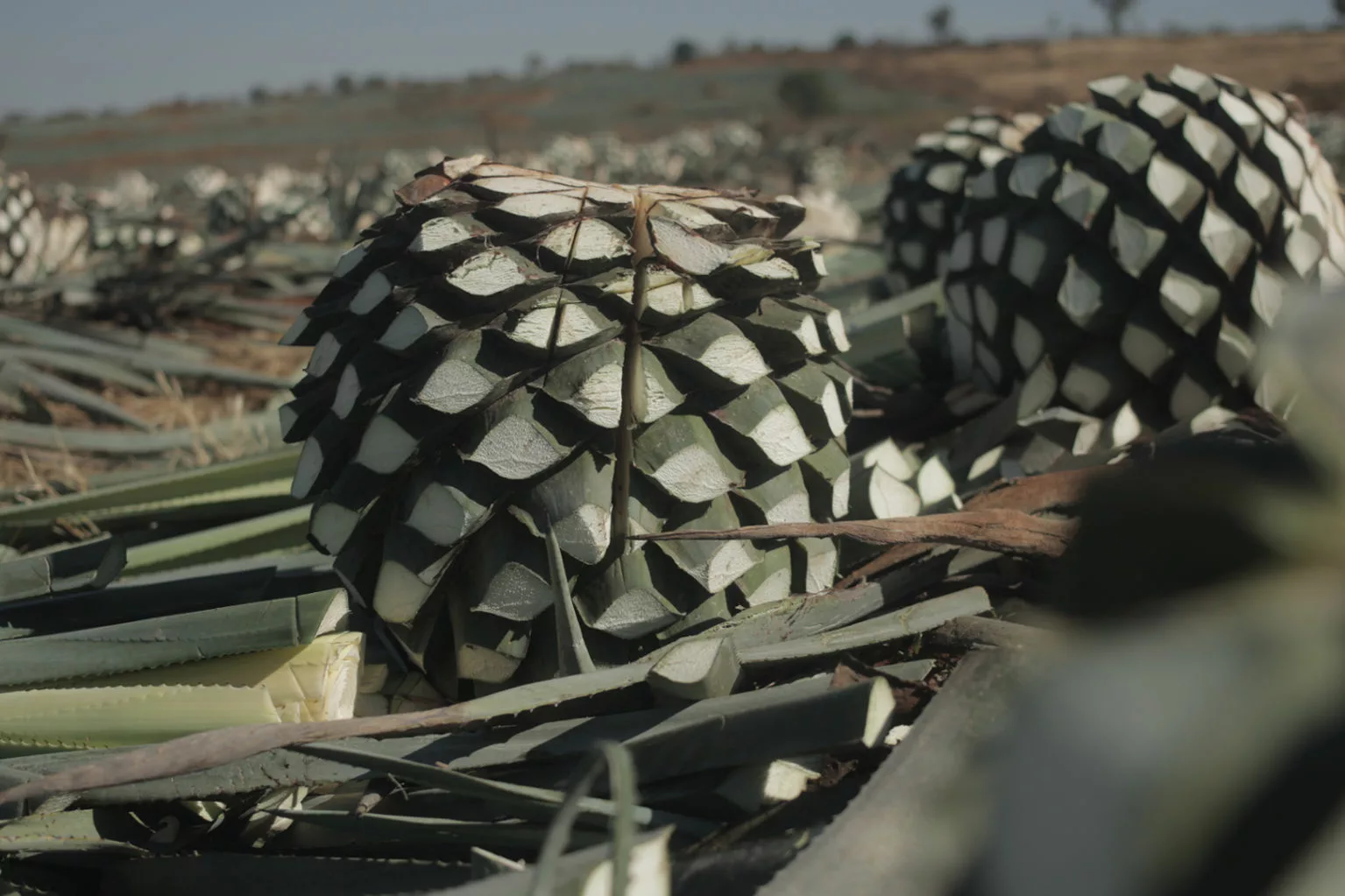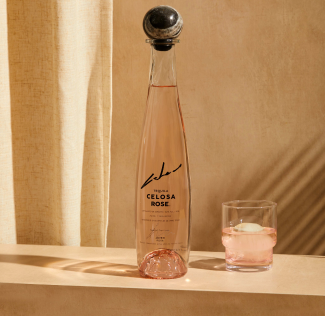What Tequila is Made From Agave?
All tequila comes from a special plant known as agave, specifically the blue agave. This plant thrives in the rich and sandy soils of Mexico, soaking up the sunshine to create the sugars needed for tequila. Not just any agave makes the cut; tequila’s unique taste and spirit come exclusively from the blue agave.
Which Tequila is Real Tequila?
Real tequila must be made from 100% blue agave and produced in certain regions of Mexico, like Jalisco and a few other areas. If a bottle says “100% agave,” you know you’re getting the real deal. This distinction is crucial because it guarantees the tequila’s purity and quality, setting it apart from imitations.
Agave Plant and Tequila Production

Overview of the Agave Plant
The agave plant, with its spiky leaves and hearty stem, is more than just a plant; it’s the soul of tequila. It grows in the heart of Mexico, taking anywhere from 7 to 14 years to mature. When it’s ready, the agave reveals a core, or “piña,” which looks a bit like a giant pineapple. This piña is where all the magic starts for making tequila.
Types of Agave Used for Tequila Production
While there are over 200 types of agave, tequila is exclusively made from blue agave or Agave tequilana. This type of agave is favored for its high sugar content, which is perfect for fermentation and distillation into tequila.
Agave Cultivation and Harvesting
Growing agave is a long game. Farmers, known as jimadores, plant, tend, and finally harvest the agave by hand. Using a tool called a coa, they skillfully remove the leaves to reach the piña. This process is a blend of art and hard work, passed down through generations.
Tequila Production Process
After harvesting, the piñas are cooked, often in large ovens, to convert their complex sugars into fermentable ones. Once cooked, they are crushed to extract the agave juice. This juice is then fermented, turning the sugars into alcohol. The final step is distillation, where the alcohol is purified and concentrated to create tequila. This process varies slightly between producers, giving each tequila its unique flavor profile.
Types and Classifications of Agave Tequila
Tequila comes in different types and tastes, each with its unique flavor and color. These types depend on how long the tequila has been aged and what it’s been aged in. Let’s explore these varieties to find out what makes each one special.
Blanco (Silver) Tequila
Blanco, or silver tequila, is the purest form of agave spirit. It’s bottled right after distillation or stored in stainless steel tanks for a very short time. This type of tequila is clear and vibrant, offering a fresh taste of the agave plant itself. It’s perfect for mixing in cocktails because it adds that tequila flavor without changing the drink’s color.
Reposado Tequila
Reposado means “rested.” This tequila has taken a short nap in oak barrels, aging anywhere from two months to a year. This rest gives reposado a golden hue and a smoother, richer flavor than blanco. The oak barrels add a touch of sweetness and complexity, making reposado a great choice for those who enjoy a drink with depth but still want to taste the agave.
Añejo Tequila
Añejo, meaning “aged,” spends one to three years in oak barrels, gaining a deeper color and more complex flavors. This longer aging process makes añejo tequila smoother and gives it a rich, caramel-like sweetness. With its bold, sophisticated taste, añejo is often enjoyed on its own, sipped slowly to appreciate its intricate flavors.
Extra Añejo Tequila
Extra añejo is the elder statesman of tequila. Aged for more than three years, this tequila reaches a level of smoothness and complexity that’s truly top-notch. Its deep amber color and rich, velvety flavors can include notes of vanilla, chocolate, and dried fruit. Extra añejo tequila is a luxury, meant to be savored like a fine cognac or whisky.
Other Tequila Variations (e.g., Joven, Gold)
Joven, or “young” tequila, is a blend of blanco and aged tequilas, offering a balance between the sharpness of the agave and the mellow sweetness of aging. It’s a versatile choice, suitable for both sipping and cocktails.
Gold tequila, often called “oro,” is usually a mix of blanco tequila and caramel coloring or aged tequila. It’s popular in mixed drinks, where its color and sweetness can shine without the cost of extensive aging.
Flavor Profile and Characteristics

Taste and Aroma Notes
When you take a sip of tequila, you might notice a range of flavors, from sweet and fruity to spicy and earthy. Blanco tequila, being the least aged, offers a pure taste of the blue agave—fresh, slightly peppery, with hints of citrus. As we move to reposado and añejo, the flavors deepen, bringing in notes of vanilla, caramel, and oak from the barrels they rested in. Extra añejo tequila can even remind you of a fine dessert, with its complex layers of chocolate, dried fruits, and spices.
The aroma of tequila also changes with its type. Blanco might fill your nose with the crisp scents of agave and lime, while añejo and extra añejo give off warmer, richer smells like honey, cinnamon, and wood. These scents prepare your palate for what’s coming, adding to the overall enjoyment of the drink.
Influence of Agave Species and Aging Process
The blue agave plant itself is the starting point of tequila’s flavor. The soil and climate where it grows can affect how sweet, spicy, or earthy the final tequila will taste. Then, the aging process steps in to add its magic. Aging tequila in oak barrels introduces new flavors and softens the sharp edges of the alcohol, making each sip smoother and more complex. The type of oak, the size of the barrel, and even the barrel’s previous contents (like bourbon or wine) can influence the tequila’s final flavor profile.
Factors Affecting Flavor Variations
Apart from the agave and aging, several other factors can change the taste and smell of tequila. The region where the agave is grown (highlands or lowlands), the fermentation process (including what yeast is used), and the distillation method (pot still vs. column still) all play significant roles. Even water, an essential ingredient in tequila production, brings its own character based on its mineral content.
The craftsmanship of the tequila maker, or “maestro tequilero,” is also crucial. Decisions made at each step of the production process, from selecting the agave plants to choosing the aging time, contribute to the unique flavor profile of each tequila brand and batch.
Health Benefits and Risks

While tequila is often enjoyed for its flavor and the joy it brings to celebrations, it’s also important to talk about its health benefits and risks. Like any alcohol, tequila should be enjoyed in moderation.
Potential Health Benefits of Moderate Tequila Consumption
Believe it or not, enjoying tequila in small amounts might have some health perks. For starters, the sugar in agave, called agavin, doesn’t raise blood sugar levels the way other sugars do. This means that, in moderation, tequila can be a better choice for people watching their blood sugar compared to other alcoholic drinks. Some studies suggest that agavin can also help in digestion and might even support weight loss by making you feel full longer. Plus, the alcohol in tequila can help you relax and unwind after a long day, as long as it’s enjoyed responsibly.
Alcohol Content and Responsible Drinking
Tequila usually has an alcohol content of around 40%, which means it’s quite strong. Drinking responsibly means knowing how much is okay and when to stop. For most adults, one to two drinks a day is considered moderate drinking. It’s also smart to drink water alongside your tequila to stay hydrated and to eat food with it to slow down the absorption of alcohol. Remember, the goal is to enjoy the taste and experience of tequila, not to drink too much.
Possible Risks and Side Effects
Drinking too much tequila, like overdoing it with any alcohol, comes with risks. It can lead to not feeling well the next day (a hangover), and over time, too much alcohol can harm your liver and other parts of your body. Drinking a lot can also affect your judgment and coordination, making it dangerous to do things like driving. It’s important to know your limits and stick to them.
Alcohol can also interact with medications and might not be right for everyone, including pregnant women and people with certain health conditions. If you’re not sure if tequila is safe for you, it’s a good idea to check with a doctor.
Cultural Significance and Traditions

Tequila is a key part of Mexico’s heritage and traditions. Its roots run deep in Mexican culture, symbolizing celebration, pride, and even a connection to the land.
Tequila in Mexican Culture and Traditions
In Mexico, tequila is a way of bringing people together. It’s common to see tequila served at weddings, birthdays, and even during solemn occasions, acting as a bridge between the past and present. Tequila is often enjoyed slowly, sipped from a small glass or a caballito, allowing its flavors to be truly appreciated. This respect for tequila reflects the deep connection Mexicans have with their national drink, embodying the spirit of hospitality and celebration.
Tequila Festivals and Celebrations
Several festivals and celebrations throughout Mexico honor the tradition and art of tequila making. One of the most famous is the National Tequila Day on July 24th, where people celebrate with tastings, music, and dance. Towns in the Jalisco region, the heartland of tequila production, host festivals that include parades, rodeos, and the crowning of the “Tequila Queen.” These events showcase the pride of tequila producers and offer a glimpse into the meticulous process of crafting this beloved spirit.
Tequila as a Symbol of National Identity
Tequila is a proud symbol of Mexican identity and craftsmanship. It tells a story of tradition, from the ancient techniques of cultivating agave to the modern methods of distillation. Tequila has gained international recognition not just as a product of Mexico but as an expression of its culture and people. It represents the richness of Mexican heritage, the dedication of its artisans, and the spirit of its communities.
Conclusion
Tequila is a drink with a rich history and deep cultural roots. It embodies the essence of Mexican tradition, from the fields of blue agave to the festive tables of families and friends. Through its various types, from blanco to extra añejo, tequila offers a taste of the land and the labor of those who make it. As we enjoy tequila, whether in celebration or quiet appreciation, we partake in a tradition that spans generations. So, the next time you raise a glass of tequila, remember it’s more than just a drink; it’s a piece of Mexican culture shared with the world.
Want to taste some excellent tequila? Check out our shop. We have a great selection that shows the true spirit of Mexico. Whether you’re new to tequila or already love it, we have something special for you. Let’s celebrate with Celosa Tequila!





